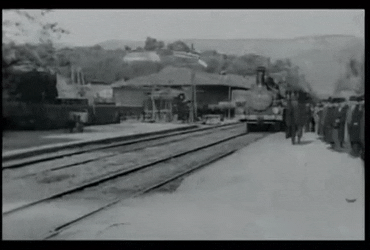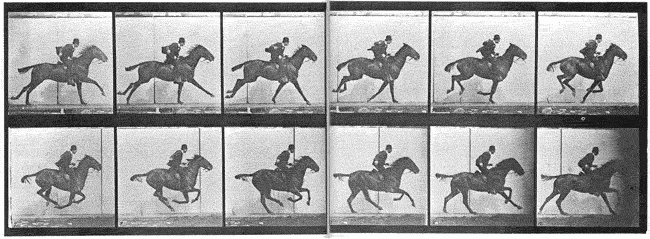FIL 253: Survey of Film History
Years as a TA: Fall 2020, 2021, 2022
Starting with my first year at Syracuse and continuing each of the two following Fall semesters, I had the opportunity to assist with the course FIL 253: Survey of Film History, taught by Mišo Suchy. This large class is a required course for all Freshmen in the Film program, consisting of 70-80 incoming students each semester. In order to provide meaningful connections and individualized mentorship within a class of this size, Mišo divides the students into smaller groups of 12-15, each of which has one TA who grades their assignments and facilitates weekly discussion sessions.
For my first two semesters of Film History, I served as a discussion leader who graded, assisted, and mentored a group of students, working to support their progress in the course and look out for their individual needs. For my third semester, I took on an administrative leadership role, helping to train and advise the incoming discussion leaders based on my previous two years of experience, as well as overseeing a number of managerial tasks and teaching occasional lessons to the whole group.
I grew tremendously as an educator through these three semesters of hard work and intensive experience. In addition, I learned a great deal from observing the positive example set by Mišo, a professor who cares about supporting every student who enters his classroom, and who continuously works to renew and revise the course to better serve them, despite having taught it for many years.
Helping with the same course three times allowed me to understand the material and pedagogical approach at a deep level, but it was never the same repetition of a static formula. Rather, each iteration of FIL 253 evolved in new ways, because we strived as an instructional team to grow and improve just like our students — embracing and adapting to new circumstances, new resources, and new teaching strategies. By assisting with this course, I was in many ways taking a course—not only in Film History, but in how to teach it, and in how to be a successful educator beyond this subject.
As I will outline in this section of my portfolio, my responsibilities as a TA in this course were highly involved and multi-faceted. My primary roles and duties consisted of the following, each of which I will elaborate and reflect upon with examples below:
FIL 253 Materials: Weekly Notes
One of my unique responsibilities as a TA for Film History was to write concise, organized summaries of what was covered in each class session throughout the semester. These Weekly Notes took the form of 1-2 page overviews of the material presented in our 4-hour class periods, including frequent hyperlinks to relevant online resources integrated within an engaging narrative description of the content.
For students of Film History, the accessibility of Weekly Notes on Blackboard allowed them to review material, delve deeper into resources through interesting links, and keep track of what they are learning so that it does not slip away between class sessions. The written format also accommodates an alternate style of learning to complement the styles of learning stimulated during in-class sessions. Unlike traditional note-taking, these summaries deliberately activate pedagogical capacities unique to the digital era through a network of hyperlinks that connects text to opportunities for further learning, reading, and viewing beyond the document itself.
For me as an educator, the act of writing Weekly Notes strengthened my skills in synthesizing complex information in an accessible, cohesive, reader-friendly manner. The challenge of condensing historical information into a page with a smoothly flowing narrative helped me internalize the structure of the course on a deeper level, developing my understanding of how a large amount of educational content can be organized and presented as clearly and efficiently as possible for the students.
With each of the three semesters I spent writing Weekly Notes, I improved significantly in my style and approach to the task. This semester when teaching my own class, I carry over the same skillset when I send out Weekly Recaps on Blackboard. The same general principles also apply any time I design a lesson plan, which always requires thinking about effective ways of synthesizing information for learners.
Samples of Weekly Notes
(First 6 Weeks of Fall Semester 2022)



FIL 253 Materials: Project Teasers
One of my favorite assignments in FIL 253 is the Collaborative Homage Project, for which students work in small groups to pay tribute to pioneers in film history by making short, creative video homages. This active, hands-on approach to engaging with history allows students to take the course material into their own hands, referencing and commenting upon historical silent-era films by making films themselves. Not only do the students embrace the assignment with enthusiasm and enjoyment every year, but they gain valuable agency in their own educational journey and begin to understand film history as something that remains active, malleable, and living, ever-shifting through contemporary interpretations as the past is seen through new eyes.
My job, in addition to mentoring student groups through the homage creation process and compiling all of their finished pieces into an hour-long showcase, was to create brief, minute-long "teaser trailers" to spark interest and excitement about the celebratory exhibition of their creative work. To make the below two videos in 2021 and 2022, I downloaded all 20-30 group projects, selected engaging visuals from each, and drew upon my own skillset as a filmmaker to shape the material into a minute-long teaser to screen for the class and larger school community—all within less than a week, to achieve a quick turnaround time on assignment feedback. Both years, I edited the teasers so that every group was represented in the teaser through at least one clip, ensuring that no student project was unrepresented.
For students, seeing these teasers on the big screen in Shemin Auditorium produced a palpable sense of excitement about showing their work. More than a homework assignment, the creation of these projects felt like a cinematic event met with anticipation. My extensive effort in creating the teasers allowed students to feel that their own extensive effort in making the projects was reciprocated by their instructors as we recognized and showcased this work. The well-deserved celebration of their assignments produced a level of engagement with the material that went beyond concern for a grade, toward genuine care and investment. Furthermore, the timing of the homage projects coincided with Syracuse Parent Weekend, allowing us to host a special event for visiting parents, at which the teasers and full showcases were screened—giving students a chance to share their work with their families, and providing families with a positive impression of the Film program at Syracuse by representing the active, hands-on learning that was taking place.
After looking back at the previous 100 years of cinema, students' final creative project of the semester was a speculative look at its future in the next century in a manner that allowed each individual to work in the creative medium of their choice—including videos, essays, posters, podcasts, and more. For this final project, I created another teaser, as well as designing, organizing, and publishing an ambitious online multimedia exhibition of their projects in the form of a website. This investment in the presentation of their creative work allowed students to feel valued and accomplished in their work.
FIL 253 Materials: Individual Presentations

As a TA, I sometimes gave a short presentation to the class on a topic of particular interest to me in Film History. This diversified the instructional voices in the classroom, dividing our lengthy sessions into smaller portions. For me as an educator, this provided valuable teaching experience with public speaking skills in front of over 70 students, an at-first daunting notion which became progressively less intimidating the more I practiced.
The below materials are some of the visual aids I used during oral presentations to the class, but these presentations took a variety of other forms beyond lectures—ranging from a hands-on animation workshop in 2022, to a piano performance of Charlie Chaplin's "Smile" along with improvised original compositions, played live from home via Zoom on my first day as a TA in 2020.
Samples of Original Presentation Materials
-
Student Short Films: The Creative Lab of Cinema + Your Film School Journey
-
Intro to Oscar Micheaux: Pioneer of Black Cinema + Independent Filmmaking
-
Locomotion Studies / Roots of Animation + Hands-on Stop-Motion Workshop
-
Intro to Buster Keaton: Stone-Faced, Death-Defying Icon of Silent Comedy
-
Shining Stars of the Silent Era: Intro to Douglas Fairbanks and Mary Pickford
-
3 Influential Figures: Lotte Reiniger, Maya Deren, and Germaine Dulac
FIL 253 Materials: Evaluation / Attendance & Grading Guidelines
Organizing and maintaining clear records of student attendance, grades, and participation for a class of 70-80 students is no small task. In my role as a TA, I designed and maintained extensive Google Sheets (such as the one to the right, which is zoomed-out to display a single semester's worth of data, with student names removed) to help the team of 6 instructional assistants manage information about their students' progress collaboratively.
The color coding system I implemented allowed us to see quickly and easily when a student developed a pattern of missing assignments or absences, based on the rows and columns with red boxes, so that we could check-in with them as needed.
In my first two years as a TA, my role included writing personalized responses to student assignments every week, as well as compiling midterm reports and final performance evaluations. In my third year, my job was to manage and organize these systems of evaluation for the other assistants, to ensure everything went smoothly according to a common set of expectations.





